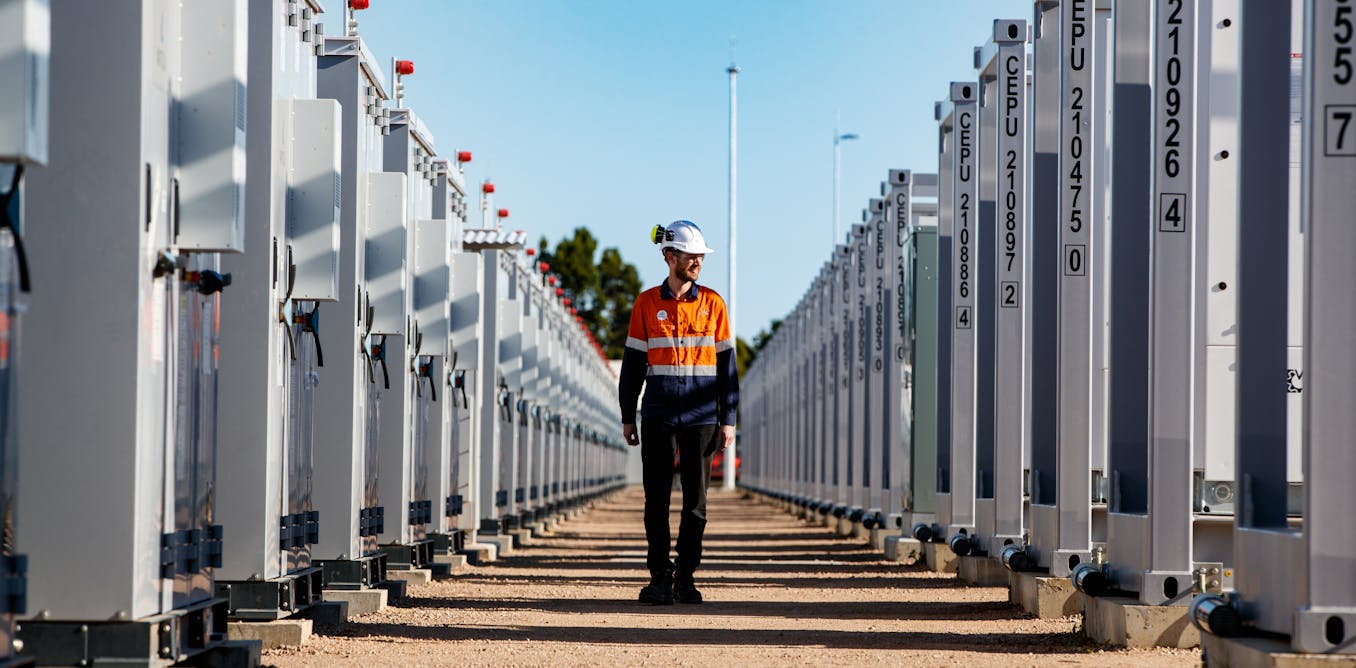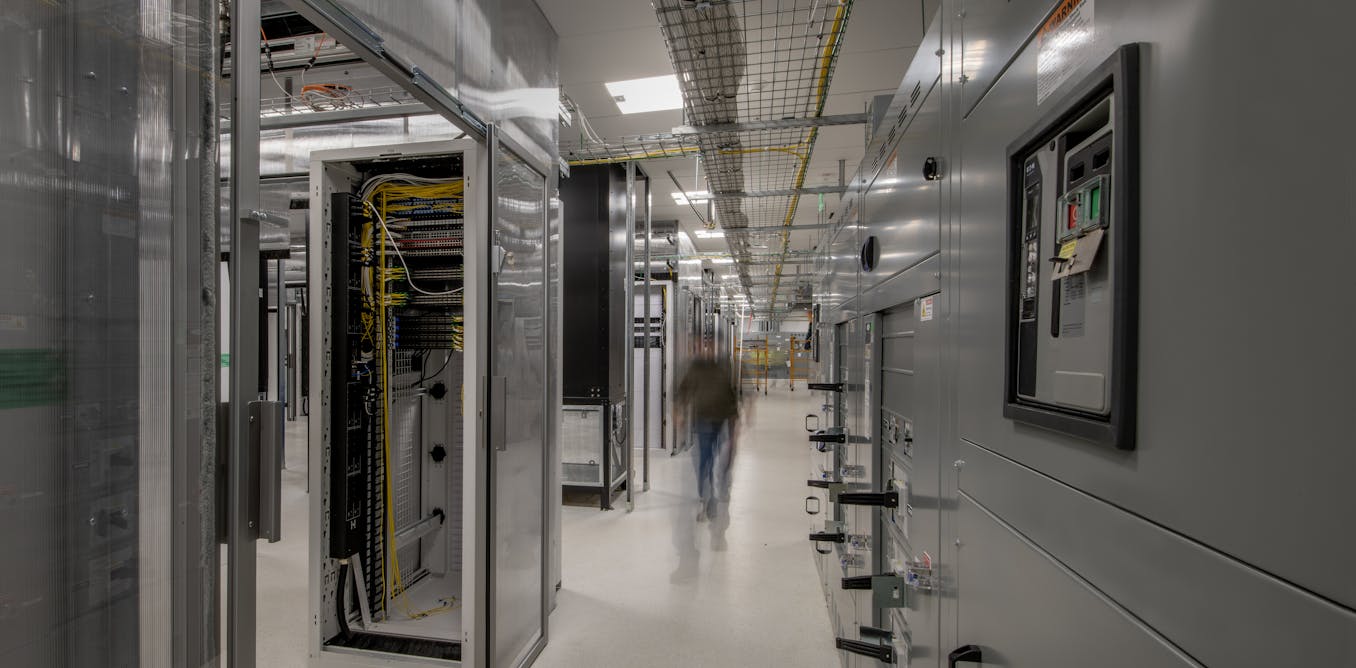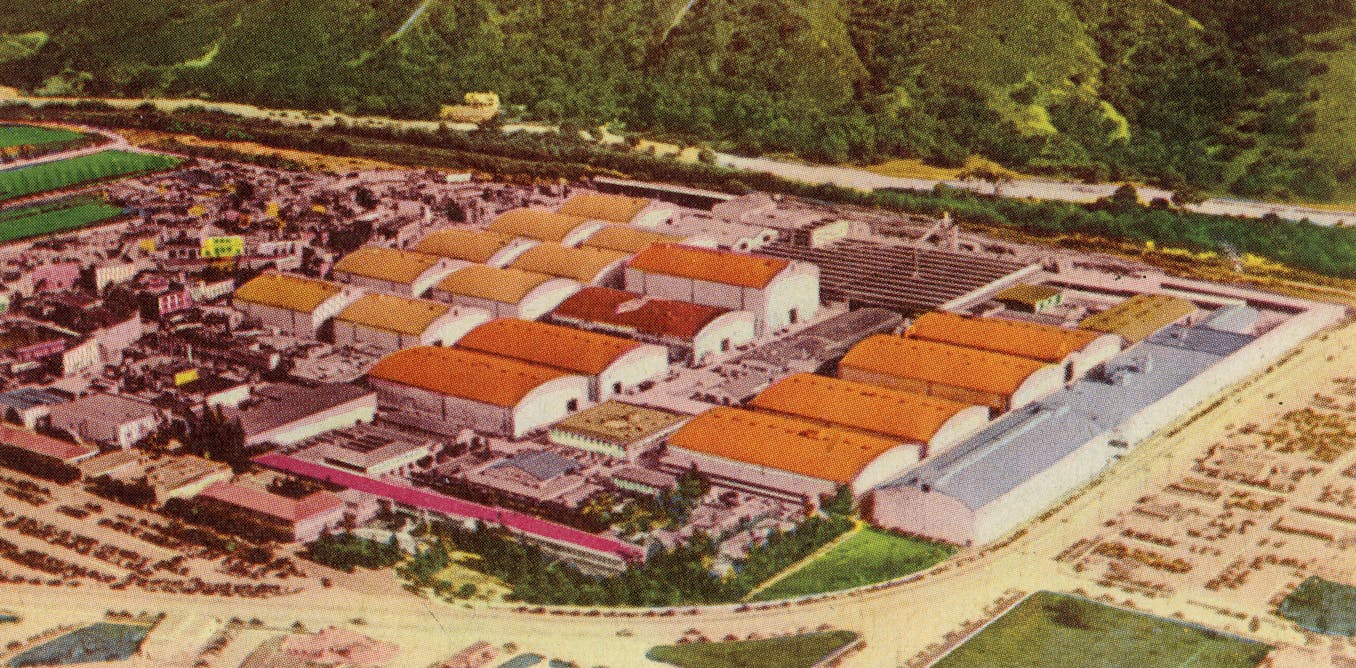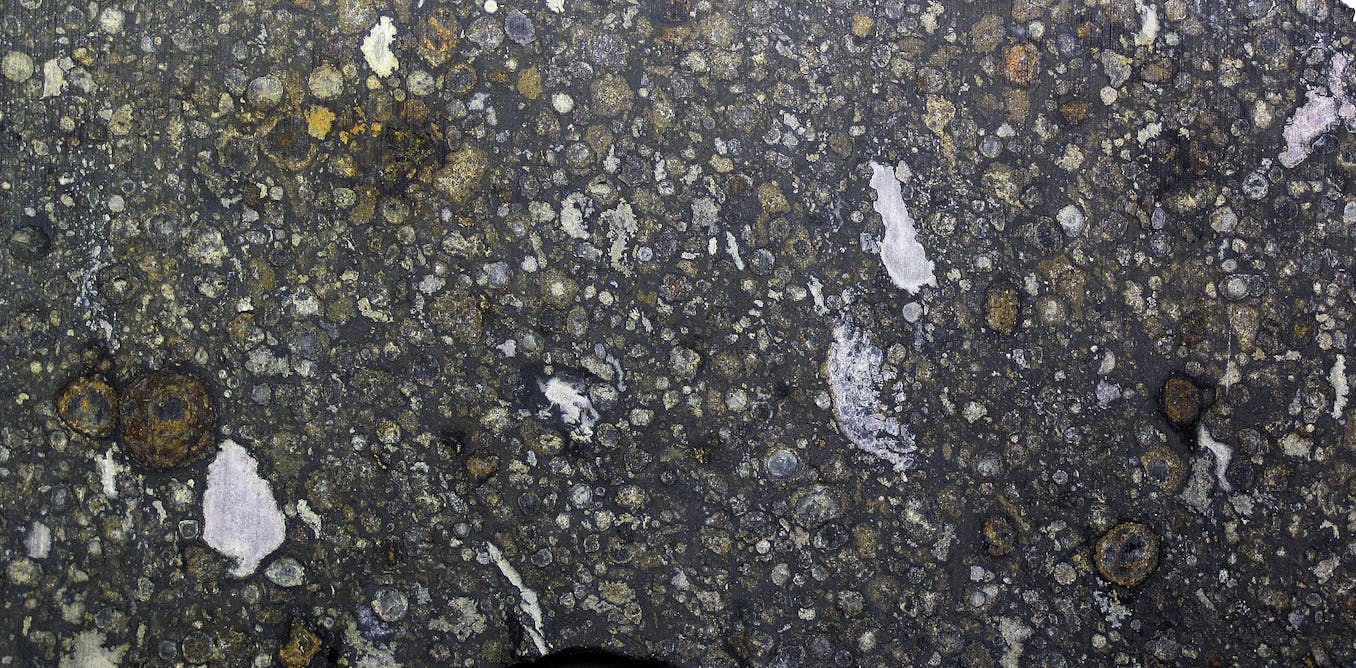The idea of terraforming the Moon may seem like a far-fetched concept from science fiction, but in reality, it is a possibility that could one day become a reality. In a recent video on Science and Futurism with Isaac Arthur, the host explored the idea of transforming the Moon into a habitable world with seas and sky, making it a blue and green gem in our sky.
Terraforming the Moon would involve a monumental task that would require advanced technologies and a strong desire to make it happen. There are different approaches to terraforming, including terraforming, para-terraforming, and bioforming, which involve making the Moon more Earth-like through various means.
One of the advantages of terraforming the Moon is its proximity to Earth and its low gravity, making it an ideal location for a base to launch interplanetary colonization efforts. Additionally, the Moon receives Earth-parallel levels of sunlight, making it a practical location for solar power.
While the concept of terraforming the Moon may seem daunting, it is not impossible. With the right technologies and resources, the Moon could one day be transformed into a habitable world, bringing us one step closer to becoming an interplanetary species.
Watch the video by Isaac Arthur
Video Transcript
We have gazed upon the Moon with wonder since the dawn of humanity, and named its craters as seas, but could those become true seas one day? Welcome to science and Futurism with Isaac Arthur, and I am your aforementioned host, Isaac Arthur.
Today we will be discussing if it could ever be possible, let alone practical, to Terraform the Moon. To give it seas and sky and make it a beautifully blue and green gem in our sky. The simple answer is yes, it can be done, though it is a monumental task and how practical it
Is will depend a lot on both your available technologies and how badly we want to do it. Today we’ll be discussing several different approaches and what is involved in each. But let’s begin by laying out some basic principles of terraforming, the main hurdles
To doing it to the Moon, the advantages it has, and some misconceptions involved. First, there’s two basic camps of terraforming, which are meant to make them more Earth-like, and that’s terraforming and para-terraforming. There’s no truly distinct line between the two
But para-terraforming tends to manifest in options like a dome on a planet full of pressurized and breathable air, or artificial lighting to match Earth’s sunlight duration and spectrum. There’s also bioforming, which is when you alter organisms to fit an alien environment.
You might adjust everything’s biology to be content with a 27 hour day on one planet, or more overtly, give humans and other mammals gills so they could live on a water planet. With very few exceptions, we should assume all of humanity’s efforts off of Earth will
Use a mix of all three options, both over the course of the endeavor and in the final product. Even on earth we may opt to para-terraform our tundras or deserts, and exact matches for Earth should be rare in the galaxy. In nearly every case you have the ability
To use one of those options far more heavily than the others if you prefer that approach. For bioforming, you can probably cook up some form of life that can live on a radiation scorched airless vacuum with sufficient effort, even if it means a total overhaul of everything to
Use silicon-based life in place of carbon. You can get heavy-handed with terraforming to take a planet with a 27-hour day and slow its rotation to 24, by extreme efforts. For para-terraforming, we tend to view this as the active use of technology to replicate Earth-like living
Conditions. You might alter daylight by use of orbiting mirrors and shades, or gravity by centrifugal force. An extreme version of that might be creating an incredibly elaborate virtual world like in The Matrix on some barren rock and plugging everyone there into, while covering the
Rock in power collectors and robotic factories. In all of these cases there’s likely to be a sweet spot for each planetary setup that varies by what the colonists want and what their technologies make most economical or practical. And that is likely to change with time. For instance, there
Are something like a million planets in just this solar system – the 8 we talk about that no longer includes Pluto are the Major Planets, and that’s basically the objects more massive than our Moon, Pluto is smaller and less massive than our Moon. There’s a couple other moons bigger and more
Massive than our Moon too but there are probably a hundred dwarf planets akin to Pluto kicking around the outer solar system and millions of minor planets, a large portion of which are asteroids. In a future solar empire, every last one of these will be para-terraformed in some fashion,
And Earth will stand as the crown jewel, hub of trade and knowledge. This will likely continue even as we expand out into billions of stars in this galaxy, because almost every colony among the stars will maintain some sort of lifeline with Earth. They would bring a lot of practical
Experience and knowledge about how to make dead rocks livable and a lot of industrial might and manpower to the interplanetary economy. Terraforming options will be very dependent on the resources you can commit to the project. If the Moon is the brightest jewel in the heaven’s next
To Earth, itself the center of a powerful empire or confederacy of growing worlds, then the sheer amount of muscle they can throw at the Moon is almost unimaginable. In the meantime, no place is closer to us and easier for us to exert efforts on. We can get stuff
To the Moon much easier than Mars or Venus. That includes signals, as signal lag from the Moon is only a bit over a second each way, not many minutes like our inner solar system, hours for the outer system, or years to neighboring stars. That means you can run robots on the moon
Controlled by people here on Earth. And while more advanced AI seems certain in the future, ones able to work fairly autonomously even if we limit it to very-subhuman intelligence, the sheer advantage of a more automated industrial base makes everything about space travel and
Development enormously easier and gives you a larger amount of resources to throw at projects. The Moon’s proximity to Earth and its low gravity also makes it our natural first base to launch not just interplanetary colonization, but build up efforts in Earth orbital space,
As bulk raw materials and fuel can be gotten off the Moon for just a few percent of the energy cost of getting off Earth with its thick atmosphere and high gravity. For this reason,
The Moon is likely to be heavily mined and home to a lot of manufacturing, for the build up of space, and thus is likely to eventually have a lot of muscle to turn efforts to improving its own
Livability, long before a place like Mars might. Indeed, I would go so far as to argue the Moon will be the first place we terraform, even if it might be a more heavy case of paraterraforming and thus might not be the first place to decently approximate a naturally livable planet. Though
Again, unless we find some decent twin to Earth in a neighboring solar system, every other candidate would also need a lot of para-terraforming, with Venus maybe being the easiest, not Mars. This hardly makes it easy and we should begin the major challenges for terraforming the Moon by
Mentioning that it is also an advantage. The Moon is one of the few objects that gets Earth-parallel levels of sunlight. Mercury, Venus, and the Aten Asteroid Group get more or equal lighting, but most objects are further away, at least for most of their orbits.
As such, the Moon is not just a place where solar power is practical, but which needs no more filtering of sunlight than our own Atmosphere provides us. However, nice as that is, there’s two problems with that lighting. First, that filtering our atmosphere does is hardly trivial,
If our air suddenly became transparent to all that ultraviolet light and ionizing radiation we would be burned badly. Second, the sun rises and sets on Earth and the Moon both, there is no dark side to the Moon except in the sense of the back side of it being invisible to
Us here on Earth. The Moon orbits the Earth and always shows it the same face and it does this once a month so that’s how long its day is too. For the sake of discussion, yes it would be
Possible to unglue the Moon from its tidal locking with Earth, and if it were terraformed with seas and sky they would act like a lubricant against tidal breaking, cutting down on how much effort had to be exerted to keep the Moon at a 24 hour day. The rotational energy of a sphere
Rises approximately with the square of its angular velocity. If you want to spin the Moon almost 30 times faster, so it rotated every day, you are talking nearly a thousand times the rotational energy it has now but it’s actually very tiny compared to Earth’s, it’s around 3 x 10^23 Joules,
Whereas Earth’s is almost a million times higher, so even spun at Earth’s rate of once a day, it’s far lower mass and radius means it would still only need a thousandth of the energy Earth did. And indeed that once-a-day Moon’s rotational energy would be a little under the amount the Sun
Produces every second, and only a small fraction of the sunlight hitting the Moon during a period it would need for tidal locking to reoccur if left to its own devices. So keeping the Moon spinning once per day is entirely doable. This is arguably still para-terraforming since it would require
Continuous technological effort to keep it from slowing down, as opposed to simply putting various mirrors in shades in a 24-hour orbit of the Moon. I think we need to acknowledge a conceptual difference with para-terraforming though, with the idea that para-terraforming is where things are
More immediately vulnerable to breakdown. A fleet could come by and wipe out those orbital mirrors and shades. As could some Kessler syndrome event of cascade collisions of orbital junk. Neither would be likely to spin a planet or moon back down again to a lower rotation. While
Para-terraforming efforts might need regular maintenance, a breakdown of civilization for a century or two after some collapse of an empire or disaster isn’t going to result in that planet de-terraforming. This is obviously a very gray and somewhat arbitrary distinction too, but I think a degree of vulnerability or time-sensitivity is implied with para-terraforming
And that its absence tends to be where we consider it more in the line of terraforming. So could we spin the Moon up? Yes, and we might too. We could do the same with Venus, to give it a day length like Earth’s instead of its backwards day-night
Cycle longer than its own year, but since Venus is nearly as massive and wide as Earth we would need to give almost three-quarter’s Earth rotational energy to match our day. Alternatively, Mars, at a tenth our mass and half our radius would have only a fortieth Earth’s rotational
Energy for the same day length, and already has one only about half an hour longer, so it already has about 95% of that energy. For Mars, we might add to its rate of spin, and angular momentum, by dropping comets on it to bring it valuable volatiles like water, ammonia,
And methane. It would not be hard to coordinate all your incoming drops of those to add angular momentum to Mars. That’s no small task but if you’re planning to add those to Mars you might as well do it that way and get the free rotational bump. Especially since dropping an object onto it
To add spin means it impacts at a slightly lower velocity, since it’s coming in near the equator and in the direction of existing spin. Less crash damage. Doing it the other way around, to subtract spin, would produce stronger impacts. But you can also magnetically drain a planet’s
Rotation as a power source, by building a planet-sized dynamo around the planet. You can add spin that way too, but must pay energy in. You also have the option of launching material off a planet, or Moon, and using that momentum to shove your planet’s rotation up or down.
When we think of exporting large amounts of raw material off the Moon, or Venus for that matter, we can imagine a large mass driver or space catapult that launched so as to add or subtract spin. Two opposing launchers could ensure that the spin remained the same,
Adding when one launched and subtracting when the other did, so you could get a body to the right spin then keep it there. A directed energy beam from the Sun could do it too, though radiant pressure alone is not your best option. A beam of ionized particles or concentrated solar wind
Isn’t a great thing to hurl at a planet with an atmosphere you want to keep either, but would also work on an initially airless planet. You could build big towers up into space with giant reflectors on them, or deflecting magnets – it’s quite easy to do without any
Gravity or air constraints — and use them like a big solar windmill to spin the Moon, or any other body for that matter. However, I think you would opt for timing your landings and launches so they added inertia. And a big mining hub like the Moon in an automated Kardashev Scale
Civilization might be belching out entire megatons of matter every moment at interplanetary speeds, while receiving large amounts of other materials, which is a lot of inertia changing hands. In any event, the key notion there is that you are likely to try to piggyback a lot of terraforming
Operations onto existing projects to save effort. I would not be surprised if we saw rotational changes done while terraforming planets, and you might piggyback off the para-terraforming effort too. Our vastly cheaper alternative to spin a planet, at least in the short term,
Is erecting a big solar shade and mirrors to keep the normal sunlight off the planet and bounce it down in a proper 24-hour pattern. This is ideal for a place like Venus as we can then
Cool it down over a couple centuries and make it livable and use mirrors to bring in a 24-hour day at Earth-level of intensity and warmth. You can make them wavelength selective too. This lets you add more light of a given wavelength to a planet for other stars than our own,
Or to remove most of the harmful ultraviolet light. Given that such shades and mirrors need to be only a few micrometers thick, even though they must have a combined surface area similar to the planet or Moon they are on, this is not a big investment of mass. Over time they may become
A hassle to repair and replace and be viewed as not as good as the real thing. In which case, such shades might be large power collectors and you could beam that energy down to the planet as a
Power source for the people and industries below. A shade like that would represent a huge amount of power and a constant one, there’s no night time or weather at some planet’s L1 Lagrange point, so you could use your surplus power as your civilization grew, or from outside your peak
Hours, to help spin that planet up, and when you get there you just recycle your orbital shades and mirrors and enjoy a natural day. Or most of them anyway, this sort of orbital infrastructure is likely to be a common feature on any planet or moon we settle on as it has so
Many advantages and is relatively cheap to deploy. It’s also a bit trickier on a moon than a planet since the Moon’s own L1 Lagrange point is with Earth, not the Sun, and the same for it’s L2,
So you need to orbit them around the Moon at a radius of about 6000 miles or 10,000 kilometers for a period of one day. You would likely use the same big thin sheets for mirror and shades, and just give them some internal power collectors and gyros so they could rotate themselves to
Either bounce light away from the Moon or add light to it, and they’d spin to reflect light away when in between the Moon and Sun. This amounts to building a micro Dyson swarm around the Moon to keep light out and I suspect you would instead try for an orbital ring around the Moon
That just had a big opaque circular shade on it moving to interpose with the Sun, and a similar approach is probably a good pick for Mercury due to its decidedly strange days. You just open or close your sun shade or mirror on that ring to the amount needed to match what you want.
This is a decidedly clunky approach though, and combined with the vastly lower energy requirement to achieve proper spin, is why I think we might see that brute force rotation adjustment occur. Which would make for some impressive tides once we got air and water in place,
As Earth would cause a lot more tidal warping on the Moon than the Moon does to us, which is why it’s tidally locked in the first place. We obviously haven’t got time today to run through all our options for terraforming in the same length, but this topic is one we have tended
To skim over in our other terraforming videos like Planetary Terraforming Techniques, and I think it applies more to the Moon. Alternatively, we devoted an entire episode to get a magnetosphere around Mars – which is much easier than folks tend to assume and doesn’t involve nuking its core. And
The same options can be applied to our Moon. But it brings up our other challenge for terraforming the Moon, and that’s the issue that things aren’t very heavy on the Moon because of its low gravity, and that combined with its lack of a magnetosphere makes giving it an atmosphere
Very hard. Or rather having it keep an atmosphere once put on. If we just opened a magic wormhole to the Moon and dumped an atmosphere on it, it would not instantly fly off, but the leakage
Would be awful. We can’t model that well enough to give useful figures but while it might be several lifetimes before any appreciable drop occurred, it wouldn’t be the same geologically long process it was on Mars of a few hundred million years. And if you spent a thousand years shipping in an
Atmosphere and have to replace your atmosphere every several millions years, then that just means you went from having 10,000 mega-freighters dropping air off every month to just one swinging by to replenish miniscule losses. Alternatively if you needed to replenish it on a timeline of
Centuries, I think that becomes unsustainable, and we don’t know what that timeline would look like for a terraformed Moon. It also represents a lot of air, as you need more air over any given area on a lower gravity planet than on Earth, because the lower gravity makes the same
Amount of air have less weight and generate less pressure down on the surface. You get a very tall atmosphere as a result, and a thicker one in terms of there being much more air above you, which would change the visual properties of the sky, particularly near dawn and dusk.
Now the reality is this atmospheric loss issue is a hard problem to solve, there are several mechanisms for atmospheric loss and they all happen faster when you have lower gravity, or are hotter, or have no magnetosphere protecting you. The Moon has lower gravity than Mars,
Is closer to the Sun than Mars and has it shine on spots for two weeks straight to further heat things, and has no magnetosphere of note. The easy para-terraforming fix is basically to dome over everything. As we saw recently in our episode the Domes of Mars, it is indeed possible
To build diamond hard domes – diamond is just carbon after all – with multiple panes that are crystal clear, filter out harmful sunlight, and help protect against micrometeors. You could make them sturdier than the steel armor on a battleship if you wanted and in that episode we detailed a
Number of backup and emergency protocols to make a dome a safer place to live than under an open sky. Which is part of the problem. I’m not sure you would ever not have those domes up given the
Advantages they have if big and crystal clear. Indeed so long as they are tall enough to hold in a normal atmospheric depth, so that the pressure was much lower near the top, you would not only still get weather but have very slow leakage out of a given dome
Even if a huge hole was punctured into it. The Moon’s low gravity is still a good deal higher than what is needed to hold particles of air moving at room temperature velocities. That’s generally a few hundred meters per second and the escape velocity of the Moon is around 2400
Meters per second. Some particles will move faster than that but the distribution of speeds falls off very sharply, especially for heavier molecules like nitrogen, oxygen, argon, and carbon dioxide. What’s mostly going to strip them off is high speed ions. Typically a hydrogen atom or lone
Proton from the Sun ramming them at roughly a million miles per hour, which is not hyperbole. A strong magnetic field bends most of those out away from a planet, or moon, and prevents all those collisions, and thus is even more important than gravity for holding atmospheres.
Again, see that episode about making a Magnetosphere for Mars for details on how, though there we recommend deploying a solar powered magnet at the Martian L1 with the Sun, and have the same problem as solar shades for applying this to a Moon, so you would probably
Use the alternative approach of a large orbital ring to generate a magnetic field, which could also serve as useful landing and launch platform. It would be a lot less visually intrusive than the solar shade and mirror approach too. I am generally of the opinion that an
Artificial magnetosphere would be installed almost everywhere we settled too, and even Earth might deploy one just to further cut down on the ionized particles coming in – which represent dangerous radiation to those on space stations or ships. This is a paraterraforming option,
And one where if it breaks down you aren’t in immediate danger, so not a jugular vein option, and neither are very tall and strong domes on the Moon, which if nice and clear don’t represent any sort of visually unpleasant effect. I suspect that even with a magnetosphere and an
Economy able to import air to replace that lost by slower leakage, you might still have those domes up. I think it would come down to the net leakage rate and if the cost of replacing that was higher than maintaining domes. You would likely keep that artificial magnetosphere anyway.
This would minimize energetic particles hitting your domes which would cut down on their own wear and tear and cut down on losses from cracked or leaking domes. You would probably have a very thin atmosphere above the domes anyway just from leakage. This also means if you have short domes,
Which get all their pressure from being a sealed container stuffed with air, rather than by weight of air like on earth, that when cracks or ruptures do occur your air spilling out is not being stripped off by solar wind very quickly and can be recovered from this over-the-dome
Atmosphere and pumped back down into domes. But that circumvents the gravity issue a bit, which is our last big problem. As we discussed in Moon: Megacity, if we could develop the ability to artificially create black holes then you could stick one in the center of any body,
Be it an asteroid or a modest planet like Mars and pump hydrogen and helium into that to generate power and add mass. You just surround it with a shell so your black hole is separate. You can also
Skip on doing this at the core in favor of placing many of them at a shallower depth in a grid around the planet or Moon. We discussed black hole tech more last week, and again Moon: Mega City, covers your gravity options in more detail. As noted there, if you wanted full Earth-like
Gravity on the Moon, which has 7.4% of Earth’s surface area, you would need 7.4% of Earth’s mass, and the Moon only has 1.2% of Earth’s mass, so you would need to add 6.2% to it,
Roughly 5 times what it has now. That’s a lot of hydrogen and helium to ship in from Jupiter but isn’t even a thousandth of Jupiter’s mass, and we might do this to Jupiter’s 4 big Galilean Moons, which are all comparable to our Moon in size, and much closer to Jupiter for shipping purposes.
Adding mass to the Moon would also raise tides on Earth, though at the level of planetary engineering we’re discussing, the increased erosion on Earth from that would be miniscule to correct for compared to everything else. This obviously would help a lot for maintaining
An atmosphere and one more like Earth’s. But if you are using domes and artificial magnetospheres this question comes down to whether or not lower gravity is biologically adaptable. If it is, I suspect you don’t try messing with the Moon’s mass.
We know zero gravity is bad for our health, we have no idea what lower gravity does and how much is enough, but we tend to assume the Moon’s gravity isn’t optimal for our health or those of other terrestrial flora and fauna, though that low gravity might make for some trees so tall that
They laughed at redwoods. This is an example where we just don’t know yet. You are likely to see a large change in how ecosystems work in low gravity though, see our life on low gravity planets episode for discussion of that, but as a simple example, ecological balances might shift a lot
If your trees are taller and flying is easier, and indeed running changes in low-gravity too, as each springing step takes longer to lower your foot down to the ground for the next one. So a given predator-prey relationship might change massively and disrupt ecologies you try to put in place.
This is where bioforming might be a better option than para-terraforming or even terraforming options. You genetically tweak organisms to better handle lower gravity and re-balance your ecosystems. As we mentioned, it is likely that every place we settle will have its own unique blend of terraforming, bioforming, and para-terraforming that it uses,
And which might change at any time. A given planet or moon might not have a unified government able to make policy decisions on terraforming and that’s why paraterraforming will often work better. It’s a lot harder to complain if one of the countries on your planet is using domes than
It is to if they’re mass altering genetics or bringing in tons of cometary bodies or putting a black hole in your planet. And my assumption is that by the time most larger bodies like the Moon, Mars, or Venus have enough people to justify a planet
Wide terraforming operation, rather than habitation domes and their parallels, that they will also have developed multiple governments, be they sovereign or simply large sub-divisions with different opinions than their neighbors on where their planet or moon should go. That time, intent, and willpower equation is the last big aspect of terraforming,
As while it might seem like a monumental task to bring in a quadrillion of tons of nitrogen from Venus or the outer solar system, and many times that in water or hydrogen to make seas,
It is in some ways easier to ship that than to decide to keep doing it. If I need to bring in 100 quadrillion tons of water to give the Moon nice deep seas in those craters, then that’s something like a trillion oil tanker deliveries of water or ice, and if you had one
Arriving every single second of every single day, that’s about 30,000 years’ worth of deliveries. All the while folks who might have been building their homes and towns in those craters might be having second thoughts about how much you really need a sea there and if it really needs to be full
Depth. Though with Earth hanging huge in their sky, far larger than the Moon is in our sky, they might have that as a constant reminder of what terraforming success looks like. It’s a long term project but in a civilization in which mass automation makes mega-projects viable
And which would likely see the Moon second in power and influence in the interplanetary settlement era only to Earth, I think the resources would be there. Indeed you might maintain willpower simply because radical life extension technology might make it so people
Survived from the earlier days who still dreamed of completing the project. While others might be quite used to the lower gravity and the monochrome wasteland beyond the domes and prefer dwelling underground anyway. They might object to terraforming further. Later
Generations might push the project once more and seek to terraform the Moon after a pause. Inevitably the question comes down to how Earth-like you want your new home to be, and how Earth-like your descendants want it when it’s been made more habitable but
They’ve adjusted too. Time will tell where the happy medium lies. The political landscape of those descendants will shift as the physical landscape shifts. It will also shift with the capabilities of technology to reshape a world, and the balance point of practical and possible,
Will all help determine the fate of our Moon and of all those other worlds we come to. But we saw today the many ways the Moon might be terraformed, so we know it can be done.
And for my part, I think a day will come on Earth when we look up at that Moon in the sky and see another sky, of white clouds over blue seas and green lands. We were discussing the differences between terraforming and para-terraforming today
And part of that line between them is their susceptibility to damage from poor maintenance, sabotage, or attack, and we’re seeing more and more these days how vulnerable our infrastructure is to cyberattacks and ransomware. This is almost always preventable and in most cases just using two-factor authentication, not repeating passwords, and using Virtual Private
Networks, like NordVPN, will keep you safe. NordVPN lets you surf anonymously from many different secure servers around the world while maintaining high-speed performance. You have every right to your privacy, websites are not entitled to know your data without even asking,
Many sell it and even good actors can get hacked and your data with them, exposing you to attack and fraud. Let NordVPN be your first line of defense, try out their fast, easy to use and intuitive interface that you can test out today with a 30-day money back
Guarantee at https://nordvpn.com/IsaacArthur. One of NordVPN’s best features though is NordVPN Proxy Extensions, that lets easily control which sites you visit with or without the VPN on, split tunneling, so you can log into your bank with your real IP while going to other websites
With the IP of the VPN server you’re using. And you can set up different VPN servers on different browsers, including loaned and borrowed devices. Use the web safer and hassle free with NordVPN. Go to https://nordvpn.com/IsaacArthur and try it out risk-free with Nord’s 30-day money-back guarantee.
So that wraps us up for today but we have a bonus episode this weekend, Sunday, February 25th, on the topic of Vacuum Trains and other hyperfast transit systems. Next week we’ll be finishing the month on February 29th, as we leap into the topic of life on colony ark ship
Carrying people to new worlds that will carry us ahead into this leap year and into March, where we’ll head back to the dawn of time for a look at Primordial Planets. Then we’ll continue our discussion of terraforming by asking if it is ethical and when,
And what sorts of challenges future civilizations will face on deciding whether or not a planet should be terraformed and to what degree. If you’d like to get alerts when those and other episodes come out, make sure to hit the like, subscribe, and notification buttons. You
Can also help support the show on Patreon, and if you’d like to donate or help in other ways, you can see those options by visiting our website, IsaacArthur.net. You can also catch all of SFIA’s episodes early and ad free on our streaming service, Nebula,
Along with hours of bonus content like Topopolis: The Eternal River, at go.nebula.tv/isaacarthur. As always, thanks for watching, and have a Great Week!
Video “Can We Terraform The Moon?” was uploaded on 02/22/2024 to Youtube Channel Isaac Arthur

The post “Is It Possible to Terraform the Moon? – Video ” by GretAi was published on 02/24/2024 by news.gretai.com





































